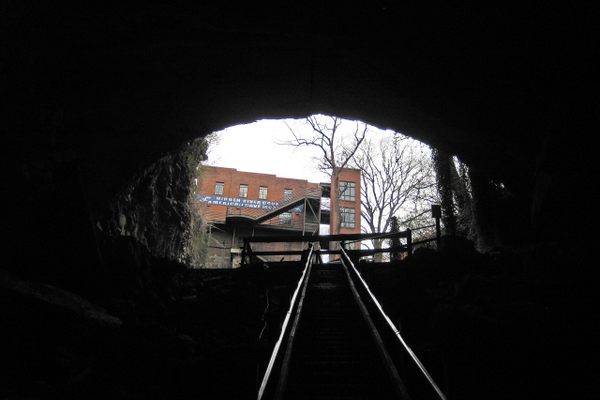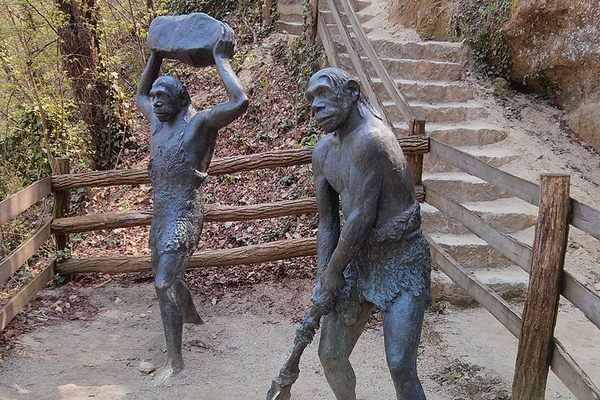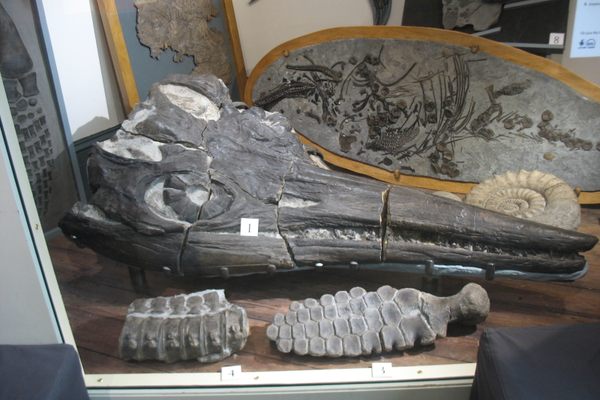About
Limestone is found throughout the substrata of the islands of Malta, and since limestone consists of calcium carbonate that may be dissolved in groundwater, naturally occurring caves can also be found throughout the islands. However, the cave of Għar Dalam, which in English means "cave of darkness," is potentially the most scientifically important of these caves.
The cave initially formed millions of years ago deep under Malta’s surface. However, during the ice ages around 500,000 years ago, a river eroded the upper layers above the cave, forming a lush valley just above it. At the time, Malta was connected to the rest of Europe via a land bridge with Italy, so the area was inhabited by animals such as elephants and hippopotami that are no longer found on the islands today. Many of these animals lived near and died near the river. Eventually, the roof of the cave collapsed, and the bones of these dead animals fell into the cave.
Hundreds of thousands of years after the river had stopped flowing above the cave and the roof of the cave had closed up again, the cave was used by other animals as a shelter, as the bones of deer, wolves, foxes, and bears have all been found within the cave. When neolithic humans arrived on the islands around 7,400 years ago, they used this cave as a dwelling, and, in fact, Għar Dalam has been identified as the location exhibiting the earliest signs of human habitation within Malta.
Over time, the caves ceased to be used as shelters and were generally perceived as just one of many caves across Malta’s landscape. Then, in 1865, Arturo Issel found some hippopotamus bones within the cave, and while he was initially disappointed to have found no human bones, his discovery led to a series of additional excavations within the cave that extracted a very large number of bones and human artifacts and resulted in substantial advances in paleontology and archaeology within the islands. The number of extracted prehistoric animal bones was so impressive that in the 1920s, galleries were built on the site to display these bones for the general public.
Both the caves and the galleries are still open today for the general public to visit. The visitor center made the novel decision to retain the century-old Victorian-style showcases, many of which display hundreds of bones separated by animal and bone type, but the center also created new signs and showcases describing the overall history of the site (including the history of the excavations and scientific studies). The footpath within the cave itself is relatively short but does show the various layers within the cave with explanations of what was found within those layers. Additionally, the site provides good views of the valley, including an older watch tower and a World War II pillbox located just across the valley from the cave, and a set of prehistoric Maltese cart ruts can be found just behind the visitor center.
Related Tags
Know Before You Go
Għar Dalam is open Tuesday through Sunday every week from 9:00 am to 5:00 pm. Visitors are charged a small entrance fee. The visitor center itself is fully accessible, but, unfortunately, the cave is not.
The cave is located just north of Birżebbuġa. The location is easily reached by car, and several bus routes travel from other locations on the island to Għar Dalam. Parking is available at the visitor center.
Community Contributors
Added By
Published
July 2, 2024
Sources
- https://kliemustorja.com/2021/07/30/ghar-dalam-maltas-prehistoric-cave/
- https://timesofmalta.com/article/the-magic-and-mystery-of-ghar-dalam.830722
- https://timesofmalta.com/article/the-stories-that-lie-deep-within-ghar-dalam-and-its-history.775460
- https://www.timesofmalta.com/article/ghar-dalam-museum.34299
- https://lovemalta.com/ghar-dalam-a-history/
- https://heritagemalta.mt/explore/ghar-dalam/
























